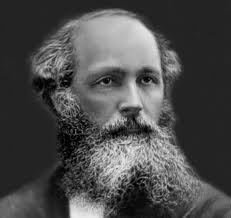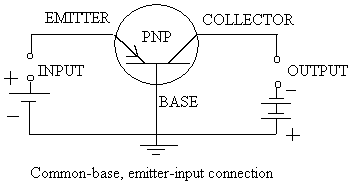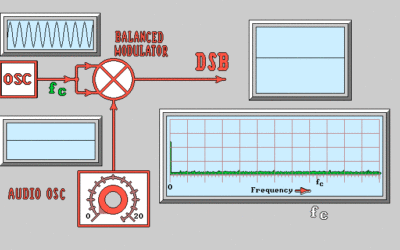 AMPLITUDE: The magnitude of change in a varying quantity from it’s zero value. Usually measured in Voltage, or deciBels, can denote volume.
AMPLITUDE: The magnitude of change in a varying quantity from it’s zero value. Usually measured in Voltage, or deciBels, can denote volume.
ATOM: The smallest particle of an element that shares the properties of that element. They consist of ELECTRONS, PROTONS, and NEUTRONS. Protons and Neutrons are grouped together in the center and constitute the Nucleus. The electrons orbit around the Nucleus.
CONDUCTANCE:The ability of a substance to allow a liquid like movement of free electrons.
CONDUCTOR:(1)A body of material so constructed that it will carry an electric current. (2)A Wire.
CURRENT:The liquid like movement of free electrons within a conductor. See Also FLOW
CYCLE:One complete revolution of a generator, from 0o to 360o. One cycle is said to be one WAVELENGTH long, and takes one PERIOD in time to produce. All cycles can be measured in FREQUENCY, and AMPLITUDE.
ELECTRON:A negatively charged particle which orbits the nucleus of an ATOM. Also called a netatron. Positive electrons, or Positrons also exist.
ELEMENT:A known chemical substance that cannot be divided into simpler substances by chemical means, and all atoms within it share the same atomic number.
FLOW:The liquid like movement of free electrons within a conductor. Same as CURRENT.
FREE ELECTRON:Electrons which are not bound to an atom, but may move or be shared with other atoms within a substance.
FREQUENCY:The number of complete sine wave cycles generated in one second. Frequency is measured in CYCLES PER SECOND (cps), PERIODS PER SECOND (pps) or more often HERTZ (Hz).
GAS:A physical state of matter in which molecules have free movement among themselves, diffuse readily, and expand in all directions indefinately. The vaporous state of a solid or gas. Gasses take the shape of their container, and flow smoothly.
HERTZ:The unit of measurement for FREQUENCY. Synonymous with Cycles Per Second.
INDUCTANCE:The property of a circuit which opposes any change in the existing current, usually produced by a coil of wire, otherwise known as an INDUCTOR.
INDUCE:To produce by the influence of a magnetic or electric field. To convert electric energy magnetic energy, or magnetic energy into electric energy by proximity.
INDUCTION:The creation of an electric current in a conductor by the proximity of a magnetic field to the conductor. The creation of a magnetic field by the flow of electric current in a conductor.
INDUCTOR:A conductor, usually wound in a spiral or coil, which introduces (induces) a magnetic field into the surrounding atmosphere.
INSULATOR:A substance not easily given to CONDUCTING electric current. Insulators have very few FREE ELECTRONS.
LIQUID:A physical state of matter in which molecules have free movement among themselves, but do not seperate as in gasses. The melted state of a solid. Liquids take the shape of their container, and flow smoothly.
MATTER:everything that has weight and occupies space.
MOLECULE:The smallest partical in any substance that still retains the physical and chemical properties of that substance.
NEUTRON:A particle found within the nucleus of an ATOM, which carries neither a positive nor a negative charge.
NUCLEUS:The center of an ATOM, made up of protons and neutrons.
OHM:The constant unit of measurement for RESISTANCE. Symbolized by the Greek letter omega (W), it is the value of resistance through which a potential difference of one VOLT will maintain one AMPERE. Specifically defined as the resistance of a uniform column of mercury that is 106.3 cm long, with a weight of 14.4521 grams at a temperature of 0o C.
PERIOD:The TIME (in seconds) which it takes to complete one CYCLE of an alternating wave.
POSITRON:A highly unstable positively charged particle with the same weight and mass as an electron. Their existance was predicted years before it could be proven.
PROTON:A positively charged particle found within the nucleus of an ATOM.
RESISTANCE:The opposition to the liquid like movement of free electrons within a conductor. Electrical friction. Reciprocal of CONDUCTANCE
SOLID:A physical state of matter in which the motion of molecules is restricted. A solid has a definite shape and volume.
VALENCE RING:The outermost orbital ring of ELECTRONS in an ATOM.
VOLTAGE:A difference in electric potential existing between two charged bodies. Electrical equivilant of pressure. Also known as ELECTROMOTIVE FORCE or EMF, and IR DROP.
WAVELENGTH:The DISTANCE between points of corresponding phase between two consecutive cycles of a wave. NOTE* It is a distance or length, as opposed to PERIOD, which is a time, and CYCLE, which is a 360o phase change of an alternating signal.




